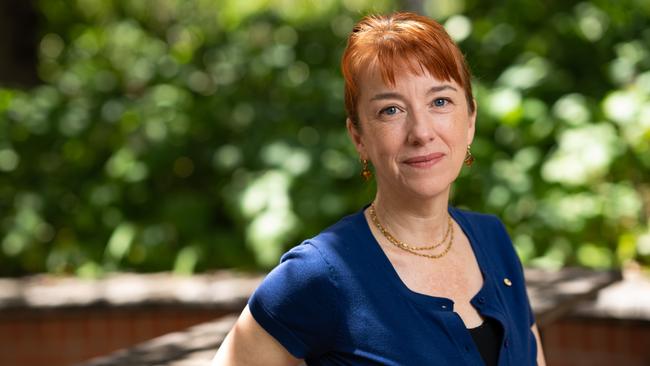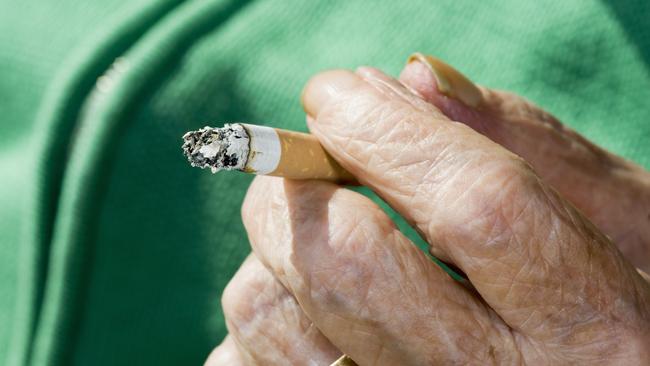‘Worse than we thought’: study reveals alarming rate Aussies are dying from smoking
Worrying findings from a study examining tobacco smoking and cause-specific mortality have raised the alarm on Australia’s biggest killer.

Former smoker Chris Harrison considers himself lucky to be alive after surviving a heart attack in 2022.
“I would never have thought it would take a heart attack to make me quit smoking, but it did,” he reflects.
The now 55-year-old Melbourne man spent nine weeks recovering in hospital and puts much of the blame for his attack down to an unhealthy lifestyle, punctuated by heavy smoking.
“It’s a big eye-opener and I haven’t wanted a cigarette since the heart attack,” he says. “I haven’t had a craving because I know where it can end up. Being in hospital for so long with tubes coming out of my chest; it was confronting and much more overpowering than wanting to have another cigarette.”


Despite what he has been through, Mr Harrison is one of the lucky ones.
Australian researchers estimate at least 66 deaths a day are the result of tobacco smoking. That’s a key finding of a new study looking into the harms of cigarette smoking in Australia.
“Smoking is still Australia’s biggest killer and we’ve gotten, I think, quite complacent about it,” warns epidemiology Professor Emily Banks from the Australian National University, one of the study’s senior authors.
“What I think this paper shows is, even though we’re down 8.3 per cent of current daily smoking, it’s still our biggest killer.”
The multi-year prospective study of people aged 45 years and older shows the harms of smoking are apparent throughout the human body and lead to a higher burden of preventable disease, particularly lung disease, and death in comparison to people who do not smoke.
“We followed 180,000 people in the Australian community over time, and we compared what happened to the people who smoked to those who didn’t smoke, and really, the news is worse than we thought,” Professor Banks says.
“We estimate around 24,000 deaths a year from smoking, and that’s around 66 deaths a day. So these numbers sound very big, and I think one of the consequences of that is that no family in Australia is untouched by smoking.”
According to the research, a person who currently smokes has a 36-fold risk of developing lung disease compared to someone who has never smoked. There is also a two-fold risk of cancer of the urinary tract, kidney, stomach, or prostate.
The research also shows there is a 60 per cent increased risk of death from dementia in people who smoke.
“People already kind of know smoking would be bad for your brain, but no other study so far has shown this increased risk of dementia,” Professor Banks says. “Partly, we were a bit cautious about that, because no one else has shown it, but it is obviously something that we’re very worried about.”
While the risk increases depending on how many cigarettes a person smokes per day, the study shows risks are present even for light smokers.

The peer-reviewed findings have been published in the latest edition of the open-access medical journal, BMC Medicine, and look specifically at tobacco cigarettes.
While official data shows smoking rates in Australia are declining, there are concerns about a rise in younger people taking up the habit. Last year, the Australian government cracked down on vape laws, largely in response to the significant uptake of high nicotine vaping by younger people.
There are also concerns about a rise in the illicit tobacco trade, as vapes become more scarce,” Professor Banks says. “We know that young people who vape are three times as likely to go on to smoke as young people who don’t vape, so we need to make sure that we’re avoiding vaping in young people, not just because the effects are sort of toxic in themselves, but also because of that impact of getting addicted to nicotine, and then the increased risk of them going on to smoke.”
She believes the findings highlight the importance of continuing to closely monitor the trade of tobacco and maintaining public health messaging.
“If you smoke, now would be a good time to quit, including if you are smoking a few cigarettes a day,” she says. “Our findings show that quitting at any age is good for health – the earlier you quit the better.”
The study’s lead author, Associate Professor Grace Joshy, also from ANU, says she would like to see more supports for people to quit.
“Australia has been a world leader in tobacco control but is at risk of lagging behind,” she says. “It’s difficult to imagine the community accepting 24,000 preventable deaths a year from just about anything else.
“Keeping the pressure up, using established and new measures, like hard-hitting mass media campaigns and health warnings on individual cigarettes, is needed to better tackle Australia’s biggest killer. Support for priority populations, through initiatives like the Tackling Indigenous Smoking Program, are also critical.”
Alecia Brooks is the chairwoman of Cancer Council Australia’s Tobacco Issues Committee.
“It’s really sad to see that at least 66 Australians are dying every day from smoking,” Ms Brooks says. “But what we do need to remember, I think, is that there’s been considerable effort in this space over the last 25 years, and that’s actually seen a halving of smoking rates, so there are so many lives that have already been saved, and we can continue to do more.
“For young people, I think the best message that we have for them is that they shouldn’t smoke in the first place. But if they do find themselves going down that path, there is fantastic support available for them through the Quit Line and even new apps being developed by both state and federal governments around supporting people to quit both vaping and tobacco.”
Natalie Raffoul from the Heart Foundation has reviewed the study’s findings and says it is also a timely reminder that the sooner a person quits smoking, the better their long-term health outcomes. But she also warns that quitting can be hard and take several attempts.
“Many people slip up after they quit and start smoking again,” Ms Raffoul says. “It’s important not to see this as a failure. Instead, think about what made you smoke again. Ask yourself: how can you deal with this situation next time? You will become better at quitting each time you try.”

Don’t give up on the campaign against smoking
By Steve Robson
In 1991, almost one-quarter of all adult Australians were smokers. As a result of three decades of hard work by public health campaigners and government initiatives, that figure has fallen to just above 8 per cent. These days, two-thirds of all Australians have never smoked. That is good news.
It is not, however, good enough. The Australian Bureau of Statistics reports that almost two million adults are still regular smokers in this country. Tobacco smoking is the second-most common cause of disease burden in the country, according to the Australian Institute of Health and Welfare.
Tobacco smoking causes ill health and preventable disease in some of the most vulnerable people in our community. Cigarettes harm thousands of mothers and unborn babies. Rates of smoking are highest in rural and regional areas; in people with chronic mental health problems; and among Aboriginal and Torres Strait Islander people.
Tobacco smoking is the leading cause of preventable death in our country – smoking-related diseases are directly responsible for more than 20,000 deaths every year. Smoking-related conditions have been estimated to cost the Australian economy almost $20bn every year.
A new study of Australian smokers released today confirms the worst fears of doctors – people who smoke even small numbers of cigarettes are at high risk of dying from conditions such as lung and a multitude of other cancers, heart disease, and strokes. The risk is only reduced for people who quit smoking by their mid-40s and never take it up again.
An enormous amount of effort has gone into trying to protect Australians from preventable harm caused by cigarette smoking, yet still many people remain addicted to tobacco cigarettes and face high and lifelong risks of terrible disease and early deaths that could be avoided. Many of these are the most vulnerable in our society.
This is no time to give up. Our whole community needs to swing in behind efforts to help those who continue to smoke. As changes in Australian legislation aim to help a new generation of young people who have become addicted to vaping, we must not forget the threat that continued tobacco smoking poses to millions of people. The only thing we can’t afford to quit is helping Australians to quit.
Professor Steve Robson is one of Australia’s most highly qualified surgical specialists, researchers and teachers. He works at the Australian National University Medical School and has served as president of the Australian Medical Association and the Royal College of Obstetricians and Gynaecologists.





To join the conversation, please log in. Don't have an account? Register
Join the conversation, you are commenting as Logout